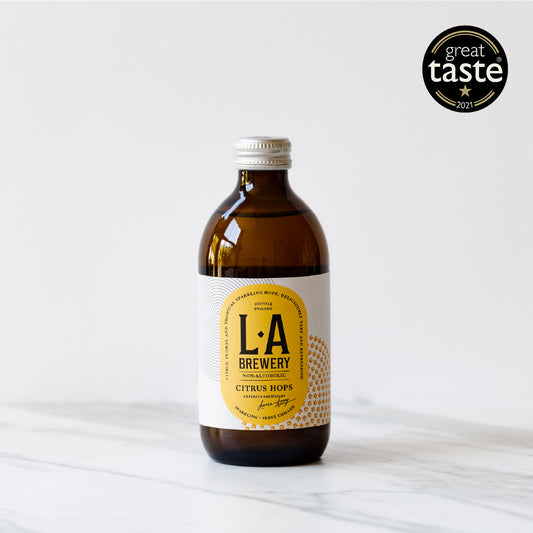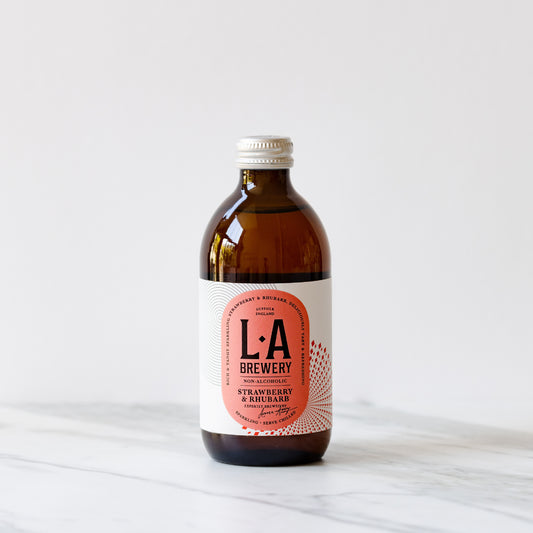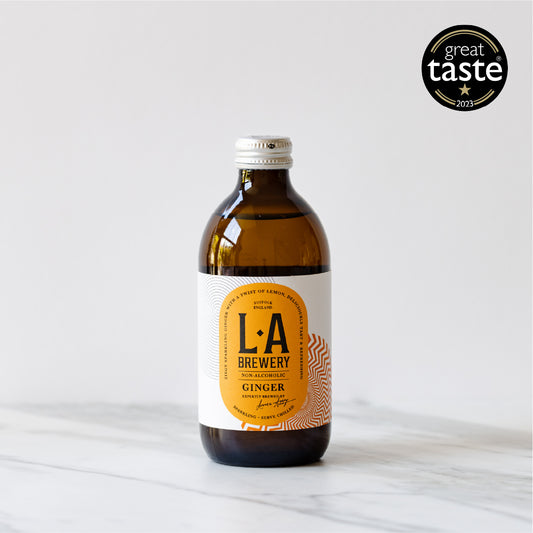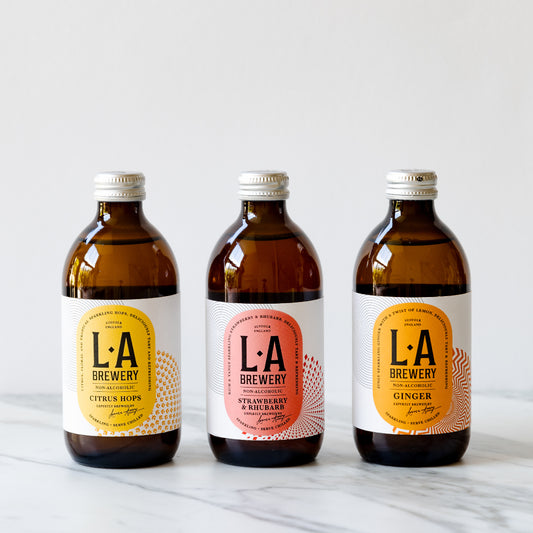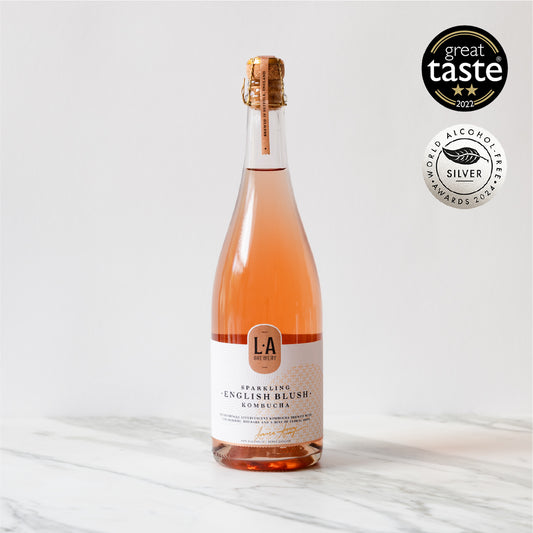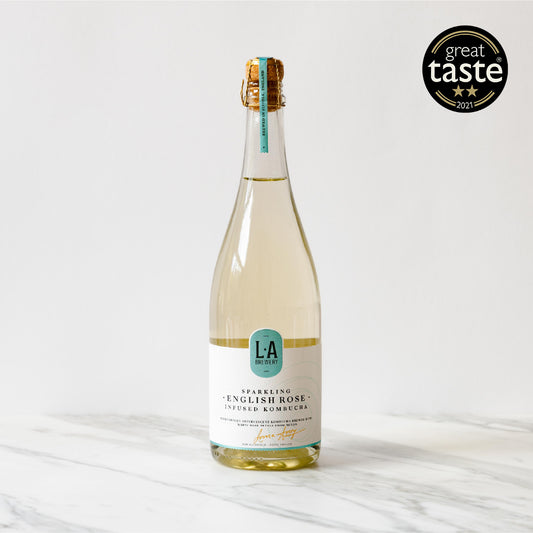AUTHOR LOUISE AVERY / PUBLISHED: APR-2022
Seasonal Plants
Foraging Guide & Recipes
-
Summer: June, July, August
-
Spring: March, April, May
SUMMER
SPRING
'SPRING IS NATURE'S WAY OF SAYING, LET'S PARTY!'
- Robin Williams
Spring is a beautiful time of year for new beginnings or keeping up good habits from the start of the year. Nature is coming back to life and offers an abundance of delicious ingredients for the feasts of the Easter break.
Louise loves Springtime because there is an abundance of young wild nutritious plants (weeds especially) that are incredibly tasty and inspire creative drinks making or pairing. Think cleavers (sticky willy) and fresh mint infused in water for a refreshing tonic to detox and cleanse the lymphatic system.
We’ve pulled together some of Louise’s favourite Spring plants & recipes using foraged ingredients from the wild:
SPRING FORAGING & FEASTING
What’s amazing about these wild ‘weeds’ is that they are disproportionately high in vitamins and minerals when compared to their cultivated counterparts. For example - nettles have the highest protein content (25%) of all wild plants as well as being packed with iron, calcium, magnesium, zinc, copper (the list goes on). More nutritious than kale and spinach. Wild garlic is another superfood, a natural antibiotic, detoxifying, lowers blood pressure & cholesterol.
1. WILD GARLIC
Look (& smell) out for wild garlic and its unmistakable garlicky scent. The wide-leafed greens are in abundance in undisturbed woodland areas from March through to early Summer. The leaves are available all season, and more commonly used in recipes, but the plant’s delicate white flowers are also a decorative and flavoursome addition to spring salads. We can’t get enough of wild garlic pesto in the Spring – Louise loves to blend it with stinging nettles for a truly foraged pesto packed with benefits. Great with grilled vegetables, or stirred through pasta – a fresh wild version of what we know pesto to be.
Wild Garlic & Nettle Pesto Recipe
INGREDIENTS
Large handful of wild garlic
Small handful of nettle tips
40g Pistachios
40g parmesan
1 Lemon
100ml olive oil
Salt & Pepper
METHOD
1. Wash your wild garlic & nettles separately in a colander
2. Gently wilt the nettles in a pan with a splash of water (to remove the sting
3. Lightly toast your pistachio nuts
4. Blend the wild garlic, wilted nettles, pistachios, olive oil & parmesan together
5. Add lemon juice & seasoning to taste
2. DANDELIONS
Dandelions are one of the first indicators of Spring, starting to bloom from early April. The entire dandelion plant is edible and contributes many benefits to health but is often overlooked in Spring recipes. Throw the heads into a salad or wilt the greens with garlic and chilli. Louise’s dandelion syrup is a floral nectar full of vitamins A, B12 as well as antioxidants – use yours in mixed drinks (we love a dash in our Sparkling English Rose) or drizzled over something sweet…
Dandelion Syrup recipe:
INGREDIENTS:
2 cups of dandelions
Water
Sugar (or honey) to taste
½ a lemon
METHOD:
1. Wash and remove the petals from your dandelion heads using a small knife (this should make 1/2 cup’s worth of petals)
2. Cover with water and bring to the boil. Take off the heat and leave to infuse overnight.
3. Strain through a sieve, discarding the petals.
4. Simmer the liquid for 10-20 mins adding some sugar (or honey) and the juice of 1/2 a lemon.
5. Simmer until syrupy.
6. Once cool, bottle.
3. THREE-CORNERED LEEKS
Appearing mid-April to May, three-cornered leeks are one of the surest signs of spring. Easily identified by their delicate white bell shaped flowers with a distinct green stripe running through each petal. Commonly found throughout the UK in hedgerows, waste ground, gardens, and sprouting from the pavement.
The whole plant is edible - roots, flowers, flower buds, leaves & flower stems – with a subtle onion-garlic flavour, similar to spring onions but a little sweeter. Eat raw in salads or sprinkled over pasta dishes. Or gently cook for a tasty addition to soups. Louise likes to eat them like chives cut over potato salad.
Three-Cornered Leeks Potato Salad Recipe:
INGREDIENTS:
New potatoes
A glug of white wine vinegar
1 tsp Dijon mustard
100ml olive oil
A large handful of three-cornered leeks
METHOD:
1. Cover your potatoes with salted cold water and boil for 15 minutes or until tender
2. Wash your three-cornered leeks and finely slice (like chives)
3. Mix your vinegar & mustard together and slowly whisk in the olive oil
4. Add your three-cornered leeks & season to taste
5. Halve & toss the potatoes with your dressing and serve warm
4. GORSE FLOWERS
The golden flower of the gorse plant has a coconutty scent & unique vanilla-floral flavour. Gorse dominates hedgerows & roadsides all throughout spring. It’s the perfect base for a country wine, cordial or mixed into your bread dough.
Be careful when picking yours, we’d recommend using gloves to avoid the sharp spines.
Gorse Flower Cordial Recipe:
INGREDIENTS:
Water 600ml
Sugar 200g
Gorse flowers – enough for about 2 cups petals
Citrus of choice (we like clementine)
METHOD:
1. Add your water & sugar to a pan and bring to a boil. Let simmer for 15 minutes or until turning syrupy
2. Wash your gorse flowers in a sieve
3. Zest & juice your citrus fruit
4. Add your gorse flowers, citrus juice & zest to the sugar syrup, and leave to cool & infuse overnight
5. Strain your syrup through a muslin cloth
6. Boil your strained liquid for 3-5 minutes & bottle.
5. ALEXANDER
We discovered Alexander on a foraging walk with Lucia from The Wild Kitchen. We can almost guarantee that you’ve seen Alexander in your local hedgerows, the tops look like a cross between cow parsley & elderflower, while the root and stems taste similar to celery.
You can braise, steam or stir-fry Alexander stems for a side of fresh and earthy greens.
Lucia let us sample her genius seasoning: dried alexander pollen. The green powder tasted like celery, mustard & fennel combined – a delicious savoury seasoning that we’d love to try our hand at making soon.
6. STICKY WILLY / CLEAVERS / GOOSEGRASS
You will find Goosegrass around on the edges of woodland paths all throughout the year, but it’s perfect for a Spring cleanse. Infuse your water with Goosegrass for a tonic that helps to detoxify the lymphatic system and reduce any gland swelling.
Spring Tonic Recipe
Simply pick your Goosegrass, wash, add to a jug of water and infuse for a minimum of 20 mins or overnight for a cleansing tonic.
Louise loves hers infused with mint, but you could use citrus peel or cucumber too depending on your preference.
7. HAWTHORN BLOSSOM
Also referred to as 'May Blossom', Hawthorn Blossom was traditionally used as a herbal remedy for the heart. The Hawthorn tree begins to blossom from May Day (1st of May) through to early June. Not to be confused with Blackthorn which blossoms earlier through April before its leaves appear after winter.
Hawthorn blossom adds a marzipan-vanilla flavour to cordials, jellies and liquors.
Hawthorn Cordial Recipe
INGREDIENTS:
6 cups blossom (stems removed)
1-2 cups sugar (sweeten to taste)
Juice and zest of citrus fruit (we like lemon)
Water
METHOD:
1. Add your sugar and equal parts water to a pan and bring to a boil. Let simmer for 5 minutes or until starting to thicken
2. Wash your hawthorn flowers in a sieve
3. Zest & juice your citrus fruit
4. Add your flowers, citrus juice & zest to the syrup, and leave to cool & infuse overnight
5. Strain your syrup through a muslin cloth
6. Boil your strained liquid for 3-5 minutes & bottle.
8. OXEYE DAISIES
Oxeye daisies start to appear in May and flower through the Summer. Find these giant daisies in meadows, on verges and field margins. Unexpectedly juicy and aromatic, you can eat them raw in salads, or preserved by candying or pickling.
Ox-eye Daisy 'Capers' Recipe
(pickled ox-eye daisies)
INGREDIENTS:
1 cup oxeye daisies
1 cup vinegar (we use cider)
1/4 cup sugar
1/4 tsp salt
1 tsp mustard seeds
Water
METHOD:
1. Cover your daisies with water in a pan and bring to a boil. Simmer for 5-10 minutes and strain.
2. Add your daisies to a sterilised jar.
3. Add your vinegar, sugar, salt & mustard seeds to a pan and simmer for 5 minutes. This is your pickling liquid.
4. Pour your pickling liquid over your daisies and seal the jar.
5. Leave for at least 1 week and eat within 1 month of opening.
9. WILD FENNEL
Wild fennel grows prolifically in coastal areas where the ground is dry, while also being found on roadsides and verges further inland. The strongest of the fennel family in taste, its sweet aniseed flavour adds life to spring salads & pasta dishes.
Wild Fennel & Rocket Pesto Recipe
INGREDIENTS
Large handful of wild fennel fronds
Small handful of rocket
40g Pistachios
40g parmesan
1 garlic clove
1 Lemon
100ml olive oil
Salt & Pepper
METHOD
1. Wash your wild fennel fronds and add to a blender with the rocket.
3. Lightly toast your pistachio nuts.
4. Blend the fennel fronds, rocket, pistachios, garlic, olive oil & parmesan together
5. Add lemon juice & seasoning to taste
10. SEA BEET
A coastal green packed with flavour and nutrients, sea beet is one of our favourite greens for stir frying. You'll find sea beet in coastal areas on the edge of pavements, between rocks and sand dunes.
Easy Chilli & Garlic Sea Beet recipe
INGREDIENTS:
Large handful of sea beet
1 chilli, chopped
1 clove of garlic, crushed
Knob of butter
METHOD:
1. Wash your sea beet and remove any very thick stems.
2. Melt butter in a pan on medium heat.
3. Fry garlic and chilli for 2 minutes or until fragrant.
4. Add your sea beat and stir fry until wilted.
5. Serve with grilled fish, chicken or tofu dishes.
With the Summer sun comes incredibly fragrant, ripe & juicy wild plants. Louise loves this time of year not only for what is available to forage, but also for the seasonal produce at local farmer's markets.
In the wild, look out for edible blossom & flowers such as elderflower, lime flower & honeysuckle; flavourful shrubs & plants like pineappleweed & wild rocket, and hedgerows heavy with late Summer berries.
1. ELDERFLOWER
Elderflower starts to bloom early June through to July where you'll find local hedgerows full to the brim with the floral, sweet smelling pollen. Many of Louise's first home-brew kombucha blends experimented with elderflower, and to this day our Sparkling English Rose and Sparkling English Blush feature it.
Pick your elderflower on a dry day to ensure the heads are full of pollen & make sure you follow your local foraging guidelines, leaving enough for others (including birds & bees).
Elderflower champagne or elderflower "fizz" is a surprisingly simple homemade low alcohol floral fizz that takes about 3 weeks to naturally ferment, so perfect for seeing you through midsummer afternoons.
Elderflower Champagne / Elderflower Fizz recipe:
INGREDIENTS:
10 fresh elderflower heads
1 1/4 cups of sugar (if you have a sweeter tooth, add more - up to 2 cups)
20ml white wine vinegar
1 lemon
3 litres of water
You will need 4 75cl glass swing top bottles, a 4 litre vessel for steeping, a funnel and a muslin cloth for this recipe.
METHOD:
1. Gather your elderflower.
2. Remove any obvious bugs by hand, or with a light shake - but be careful not to lose too much pollen. The liquid will be strained, so don't worry too much about the odd ant.
3. Add your elderflower, the zest and juice of a lemon, the vinegar, sugar and 3L of warm water to your vessel.
4. Stir until the sugar is dissolved. Cover & leave to steep for 24hrs.
5. Strain the liquid through a muslin and use a funnel to fill your four bottles.
6. Leave to ferment for 2-3 weeks. Open the swing tops every few days to release pressure & check for fizz. Do this every other day after the first 2 weeks as it can get fizzy quickly.
7. Refrigerate & drink within 1 month.
2. PINEAPPLE WEED
Pineapple weed or wild chamomile thrives in unlikely locations: cracks in the pavement or patchy areas of greenery. Easily identified by its distinct pineapple scent when crushed (and taste!). Louise urban-forages hers from meadow patches in London parks each year.
We love the tropical taste of pineapple weed syrup used as a base in cocktails. Delicious with our L.A Citrus Hops.
Pineapple Weed Syrup Recipe:
INGREDIENTS:
1 cup of pinepple weed (leaves removed)
White sugar
METHOD:
3. LIME FLOWER
(Linden Flower)
Another summer tree blossom with a captivating scent. The linden or lime flower is aromatic and mildly sweet, and makes a soothing cup of tea not dissimilar to chamomile.
The trees bloom in late June through July and are easily identified by the 5 petal flowers that hang down in clusters. Pick the clusters of flowers by cutting at the stem. Louise finds hers in Victoria Park, London where a line of lime trees border the paths.
Lime Flower Tea Recipe:
INGREDIENTS:
2 good handfuls of lime flowers
METHOD:



